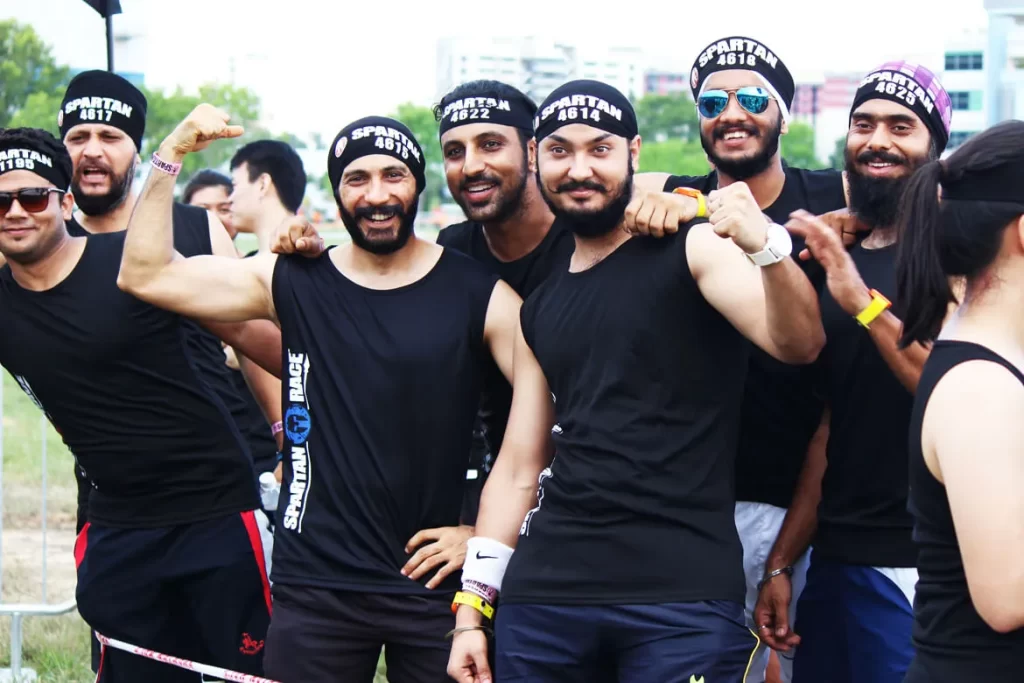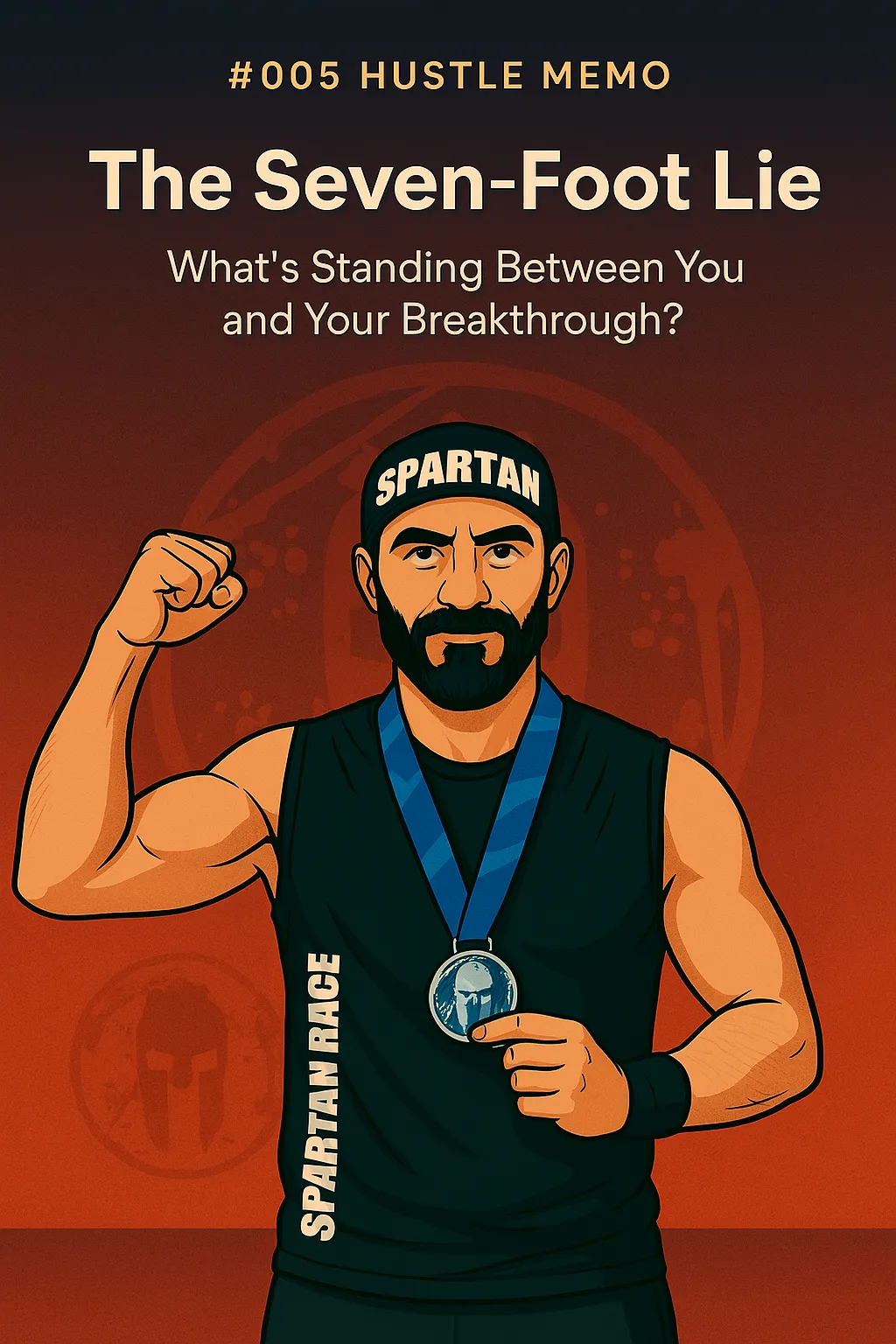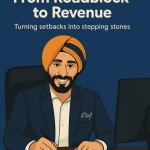What’s Standing Between You and Your Breakthrough?
Have you ever stood in front of something that felt impossible? A challenge so big, it seemed like it was staring at you, daring you to try? That’s exactly how I felt many years ago. It wasn’t just a physical obstacle—it was a reflection of the fear and doubt swirling in my mind. I froze, convinced I couldn’t do it. But what if I told you that the obstacle wasn’t the real problem? The real barrier was the story I was telling myself—one that said I wasn’t strong enough, brave enough, or ready enough. What happened next changed the way I think about fear forever.
Years ago, I was training for the Spartan Race—a grueling challenge that tests not just your physical strength but your mental resilience. My friends and I were determined to complete all three Spartan races in one year, and we trained hard for it. But on race day, my team opted for a lighter version of the event later in the day, leaving me to tackle the early morning race alone.
The Spartan Race is no ordinary run; it’s packed with obstacles designed to push you to your limits. As I moved through the course, conquering one hurdle after another, I felt confident—until I reached the seven-foot wall.
This wasn’t just any obstacle; it was a towering challenge I had never trained for. Standing there at 6:30 am in the morning, staring at the wall, I froze. Fear crept in. “I’ve never climbed a wall like this,” I thought. “What if I fail? What if I embarrass myself?” The idea of doing 30 burpees as a penalty felt like admitting defeat.
Minutes passed as I stood there, paralyzed by fear. The wall loomed larger and larger in my mind.
I didn’t move, and neither did the wall.
Time was slipping away, and without anyone nearby to demonstrate how to climb it, I felt stuck. It reminded me of something called the “4-minute mile concept.” (If you don’t know this story yet, let me share it briefly.)
The 4-Minute Mile Concept:
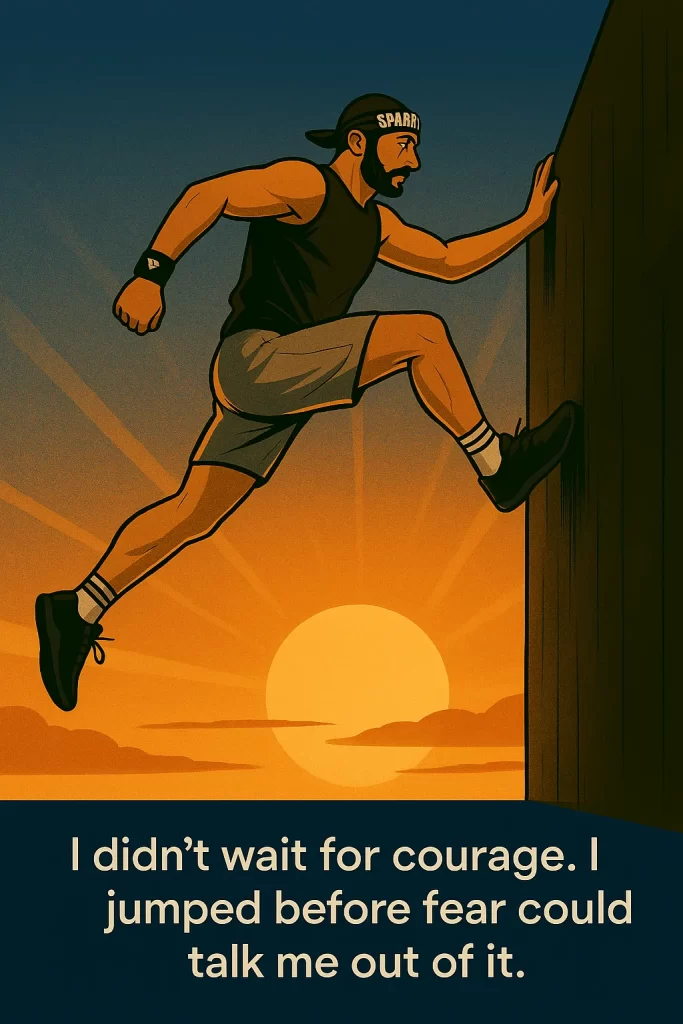
In 1954, British athlete Roger Bannister became the first person to break the 4-minute barrier for running a mile, clocking in at 3:59.4 at Oxford’s Iffley Road Track. Before his achievement, many believed it was physically impossible for humans to run that fast.
But Bannister’s success shattered this mental barrier. Within a year, 37 runners had achieved this milestone, and over 300 did so in the following year. His achievement proved that belief and mindset play crucial roles in human performance.
The “4-minute mile” has since become a metaphor for overcoming mental barriers—showing us that once we see something is possible, it becomes easier to achieve.
Back to My Story:
Then something shifted in me. I realized that standing still wouldn’t change anything—the only way forward was through action. “Let’s try,” I told myself. Gathering every ounce of strength, I ran toward the wall, jumped, planted my foot on its surface, and pulled myself over.
As I landed on the other side and continued running, I started questioning myself: Why had I been so paralyzed? The wall wasn’t as impossible as it seemed.
But the story doesn’t end there.
Later that day, my friends joined me for the Spartan Sprint—a lighter version of the race. When we reached the same seven-foot wall, they hesitated just like I had earlier. Watching them struggle reminded me of my own fear hours before.
Courage inspires others: So I decided to show them what was possible—I ran to the wall and climbed over with ease. Seeing me succeed gave them the courage to try, and one by one, they conquered their fears and scaled the wall.
It reminded me again of Bannister’s story: once you know something is possible, it becomes easier.
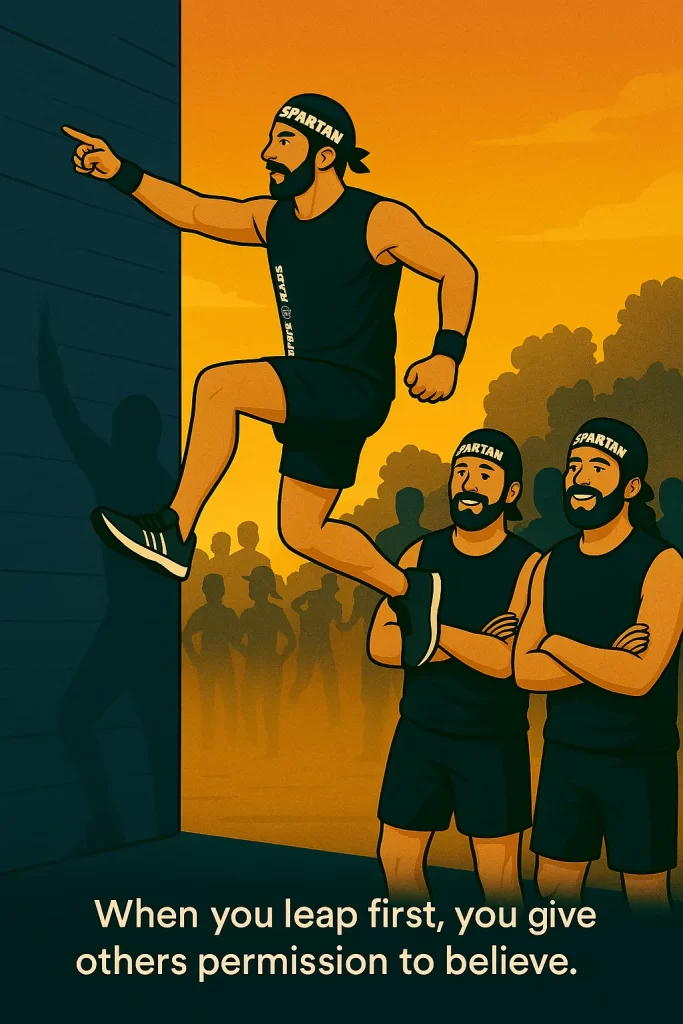
The Lesson:
That day taught me something profound: fear is self-created. We amplify challenges in our minds until they seem impossible—but when we face them head-on, we often find they’re smaller than we imagined.
Here are three key takeaways from my experience:
- Fear grows in hesitation: The longer you wait to confront your fears, the bigger they seem.
- Action shrinks fear: Taking even one step toward your obstacle can change everything.
- Courage inspires others: When you face your fears, you create a reference point for others to follow.
This lesson isn’t just about walls or races—it applies to life itself. Whether you’re starting a business, chasing a dream, or tackling a tough decision, fear will always try to hold you back. But remember: fear isn’t real—it’s a story we tell ourselves.
Another Inspiring Story: Dick Fosbury
There’s another incredible example of breaking barriers: Dick Fosbury’s Flop.
For decades, high jumpers used traditional techniques to clear the bar—until Fosbury introduced his revolutionary “back-first” approach at the Olympics in 1968. Critics doubted him at first, but his method changed the sport forever.
Like Bannister’s 4-minute mile or my seven-foot wall moment, Fosbury showed us that innovation and courage can redefine what’s possible.
Your Turn:
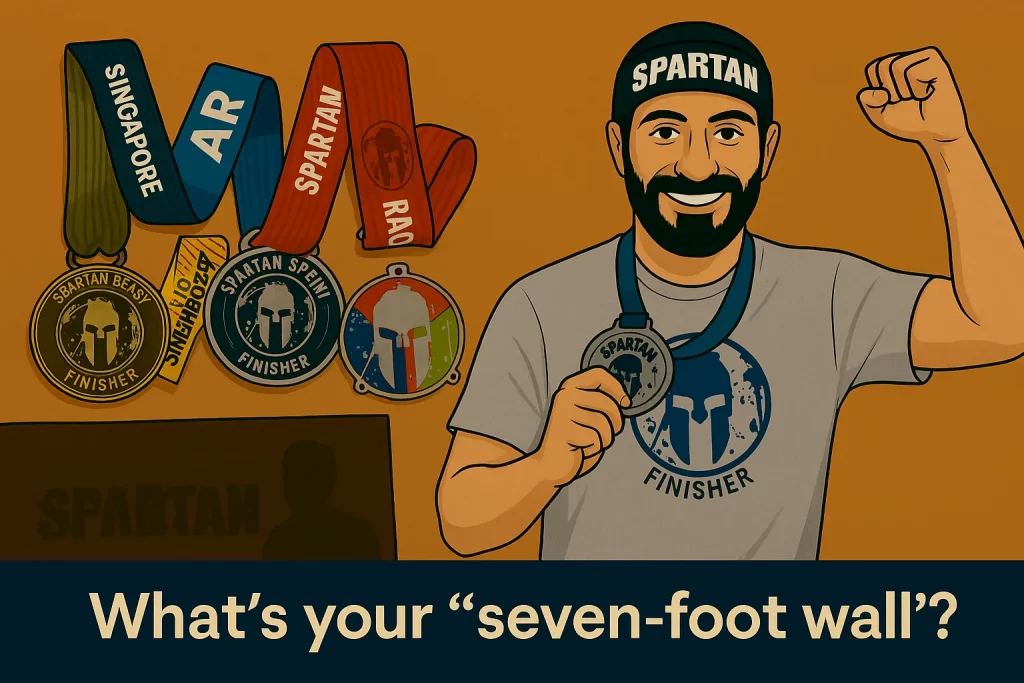
What’s your “seven-foot wall”? Maybe it’s launching an idea you’ve been sitting on or overcoming self-doubt about something new. Whatever it is, take one step toward it today—don’t let fear dictate your story.
And if you’ve faced an obstacle and conquered it, share your story in the comments below! Your experience could be someone else’s reference point—the spark they need to face their own fears.
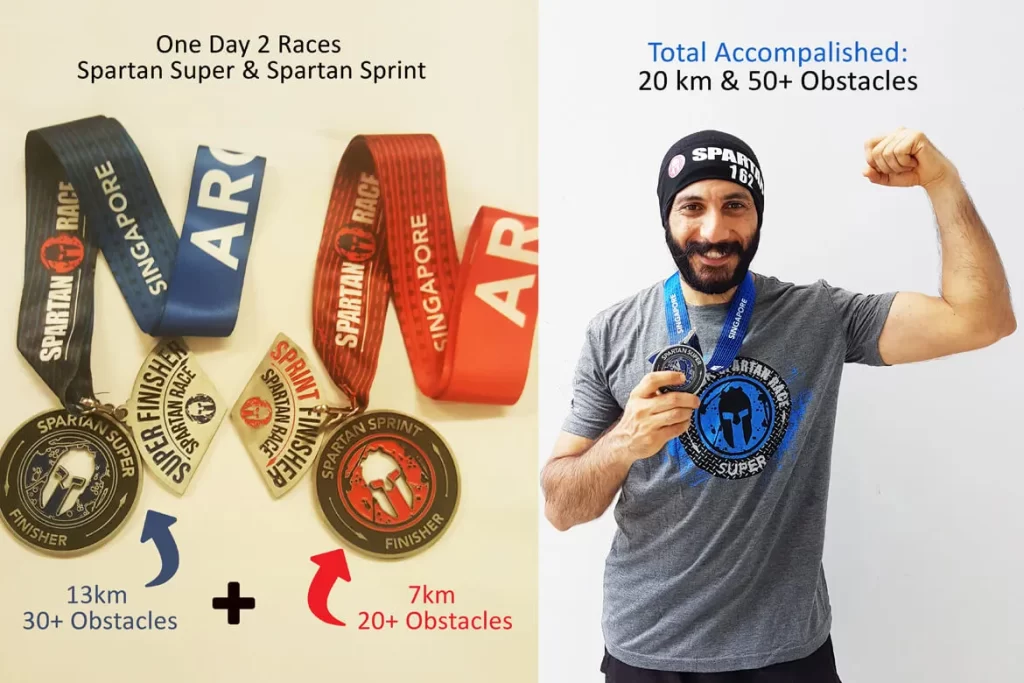
Fear is nothing but a shadow we cast in our minds. Let’s rewrite our stories together—one leap at a time!
